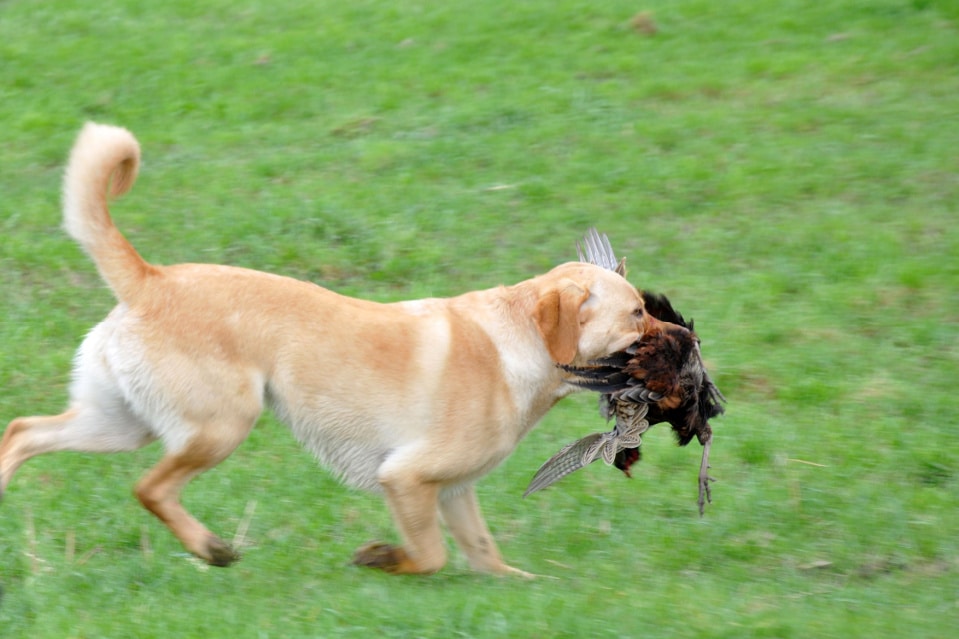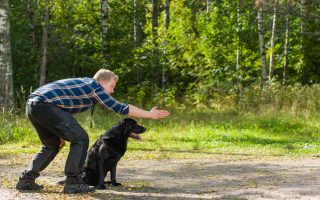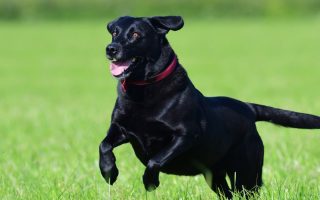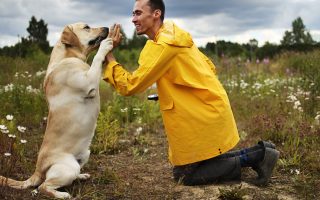The pheasants hunt Labrador has an important job to do during the time of year when birds are flying all over the place. The dog’s job is to flush the birds out of the brush and then retrieve the bird after it has been shot. If the dog doesn’t do its job correctly, the hunter will never shoot any birds.
So the hunter must train the dog properly. If you are looking for an experience of a lifetime, then you should consider preparing your Labrador for a pheasants hunt. But you need to make sure that you are ready for the task. You will need to be dedicated to the training process to get the job done right.
Hunting style and temperament Of Labrador
A good dog trainer will be able to assess your dog’s critical temperament and advise you on which breed is best suited to your hunting style and the terrain where you hunt. One of the most important considerations is whether you want a dog that will point and retrieve the bird to hand or a dog that you will flush and shoot over.
If you plan to hunt in areas with a high density of birds, you will need a dog that will keep up with you and be able to find and retrieve downed game. Dogs that will point and retrieve to hand, such as the English Pointer, are less effective in this situation.
It is essential to consider the terrain you will be hunting, as different breeds are more suited to different types of terrain. For example, you will not want to take a flat-coated retriever to the uplands or a spaniel to the mountains.
How to Train a Top Pheasant Dog
Whether you’re a seasoned dog trainer or a novice looking for a new challenge, training a pheasant dog can be a very rewarding experience.
You get a chance to spend a lot of time in the great outdoors with a great dog. The pheasant dog is a versatile bird hunting dog. They are challenging dogs to train because they have a lot of energy and want to chase everything in sight. Training a pheasant dog requires a lot of patience and skill.
Define Tasks – What Your Retriever Will Learn:
Training with toys and hunting real birds requires your dog to be excellent in different scenarios for a perfect grab. You must teach your dog to recognize the scent of the pheasant, follow and locate them, flush out the quarry, and get it to you. Remember! Teach your Labrador to do it in stealth mode, meaning no startled gunshot, no sign of go and catch the bird, and tell your pup not to bark as well.
Isn’t it sound like 1 or 2 years of training for you? Or it seems like you’ve to train a lot. Let me tell you something. Labrador is one of the genius breeds. It’s not that much work, but just mastering a few commands and basic signs to this all.
Another thing, this training doesn’t train only the retriever to locate and flush the bird silently, but not to harm it before returning it to you. The sooner you start, the better your pup will get used to it. However, you’ve to spend a lot of time initially in this training, and be patient, because everything pays off in the end.
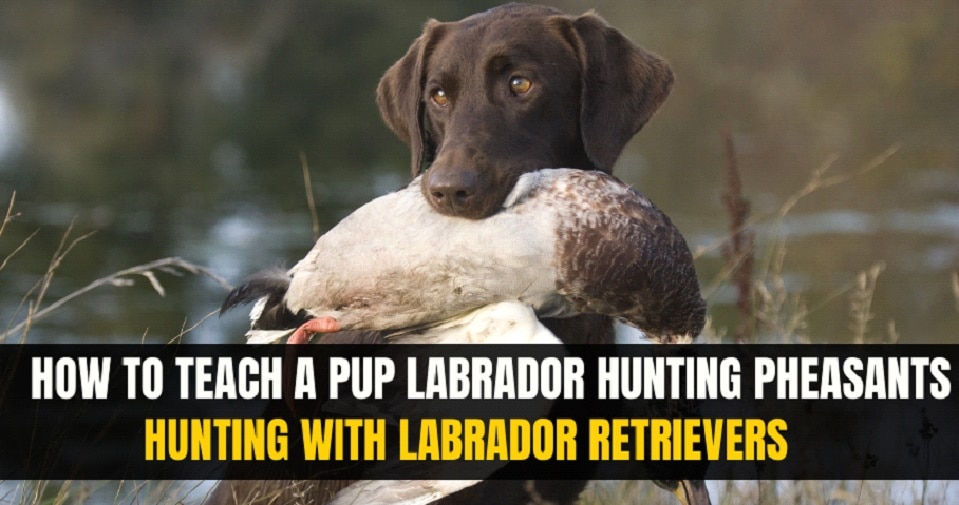
Getting Started – Let’s Catch The Birds:
Before the training, teach your retriever some basic yet necessary commands for a better outcome. It includes ‘stop’, ‘sit’, ‘stay’, ‘fetch’, ‘come’, and ‘down’. Also, train them not to be feared of guns when you go hunting with them, and you will need some extra supplies for your dog:
- Vest: Get a bright orange or yellow vest for your Labrador.
- Leash: You will need a long and short leash, plus a training harness.
- Treats: A Treat is a must after completing or learning a task.
- Space/Ground: You will need a vast ground or space to train your dog correctly for training purposes.
- Time and Patience: It’s for you! Usually, it takes months to train them properly. So be patient for the right time.
- Pheasant scent: For tracking and following the pheasant or toy bird.
Again! It takes months to train your dog to be a professional at hunting pheasants. In fact, experts hunters also suggest that it takes a couple of years for a dog to be highly skilled at hunting. Remember! Not to rest in the middle, instead enjoy in the end! And, don’t forget to train your dog off-season to keep his skills sharpened.
Easy Methods To Training Your Lab:
Live Bird Method:
Here, you will train your dog with a live bird and some in the cage.
Get a single clipped bird wing on a string and a cage with several birds in it. Let your dog stand by your side and the wing on a string. Start swinging the wing’s string to draw Lab’s attention. It’s fine if your dog is not facing the wing; it’s just to make sure that the pup has seen the wing and is desirous of chasing it down.
Now, take a clipped wing bird. Swing and toss the bird a few feet away and give commands to your dog to chase it and catch it. (Repeat it every day on the training session until your retriever chase, catch and find the bird each time you toss it. A treat is a must to build interest.)
The Labrador has recognized the pheasants’ scent now for hunt. Take the other birds in the cage without knowing your dog, cover them in the grass and go back to your pup. Try to turn him loose, and let him track the cage with the scent. (A treat is a must)
Open the cage’s door after your dog has found the cage and release the birds. It won’t take long for your pup to learn to point the birds after you yell “Bang!” once he starts chasing them. In case your puppy is still unable to point the birds, hide the cage as best you can and keep working with him until he achieves it. Instead of yelling “bang!” you can use a starter pistol or blanks to train your pup.
Introduction To The Pheasant Method:
Here, you will teach your Labrador retriever how to hunt down by introducing the pheasants’ bird.
Start with a toy bird. Prepare it with a coating of scent and allow it to dry. You can also use a single decoy to introduce your dog to birds. Let your pup play with the toy bird or decoy, so he can easily recognize the scent of the pheasant while training. Repeat the process time-to-time, once a week, and then after a month to make your pups’ memory stronger.
Like the live bird method, get your dog in the huge space or training ground and start tossing out the toy. Let your Lab recognize the scent and find out the bird. A treat is a must after accomplishment. Extend the tossing area after the accomplishment of the previous task. Introduce commands to your dog like “hunt” or “seek” as he’s off to catch the decoy. Again, reward him with special treats and repeat the process until he genuinely masters it.
It’s time to hunt! When the pheasant season is up, please take out your pup to hunt and start working on live pheasants. Let him find out and flush them out for you. From hunting with a decoy to hunting live quail, he shouldn’t have any trouble making progress.
Training Techniques that Make Your Pheasant Dog Better
- Let’s find out how you can improve the hunting skills of your wild retriever.
- ⦁ Desire to Hunt Pheasants: Make your pup desirous about the hunt. An excellent pheasant-finder is passionate about raising ring-necks in the air.
- Occurrence the Desire to Hunt Pheasants: Give your pointing or flushing dog lots of exposure to ring-neck pheasants after you train him to be desirous of hunting them and raising them.
- ⦁ Intelligently Quartering In a Search for Birds: You can increase the retriever’s hunting skills by pointing out the likelihood of the pheasants and where your dog can find them intelligently.
- ⦁ ‘Hunt Dead’ On Command: After flashing out the bird, it sometimes falls in the thick grass, and it is inevitable to find them without a hunting Labrador. You can train them “Hunt Dead” command. So, when you command, the dog will hunt the pheasants in no time.
Conclusion:
We hope you enjoyed and learned how to hunt pheasants with your Labrador and how to train them properly. We know that Labradors are probably some of the most popular hunting dogs globally, and they’re great at their job, but they’re also great pets for just about anyone.
Not only that, but we are always happy to help you make sure your Lab is able to do all the things you want them to! Thanks again for reading our blog, and we hope you enjoy your Labradors!

